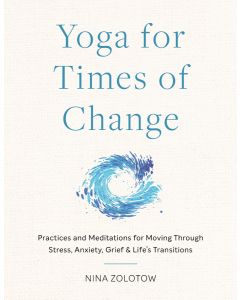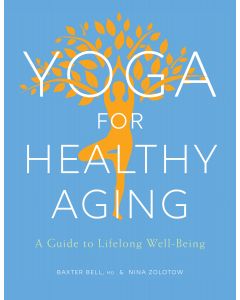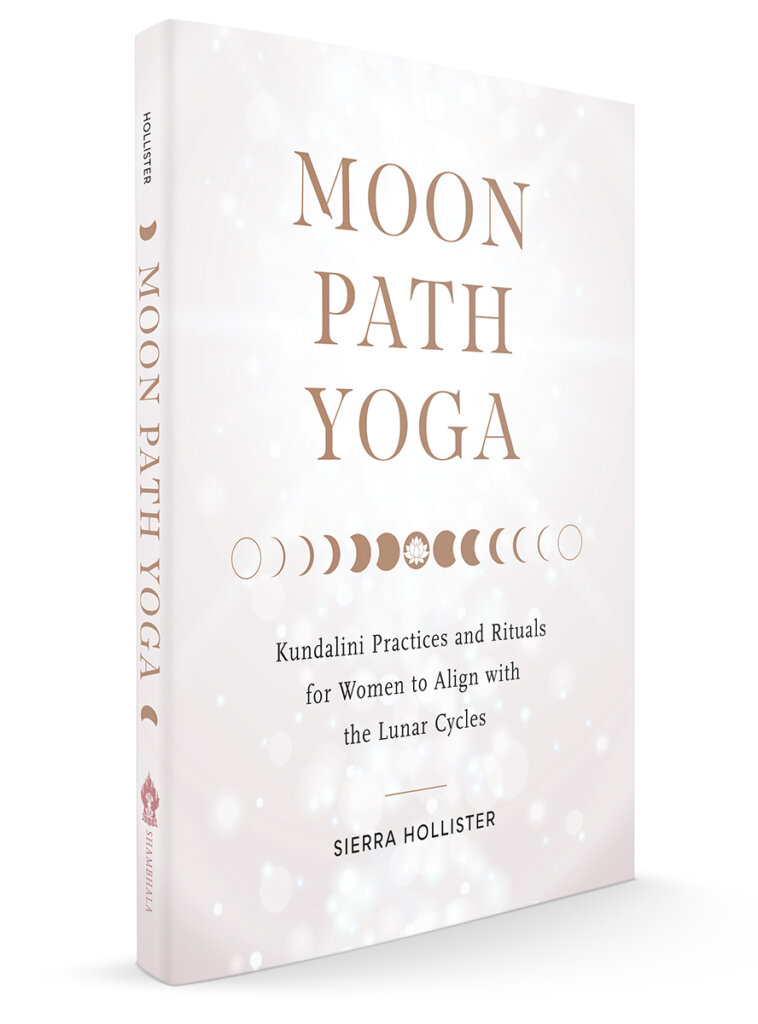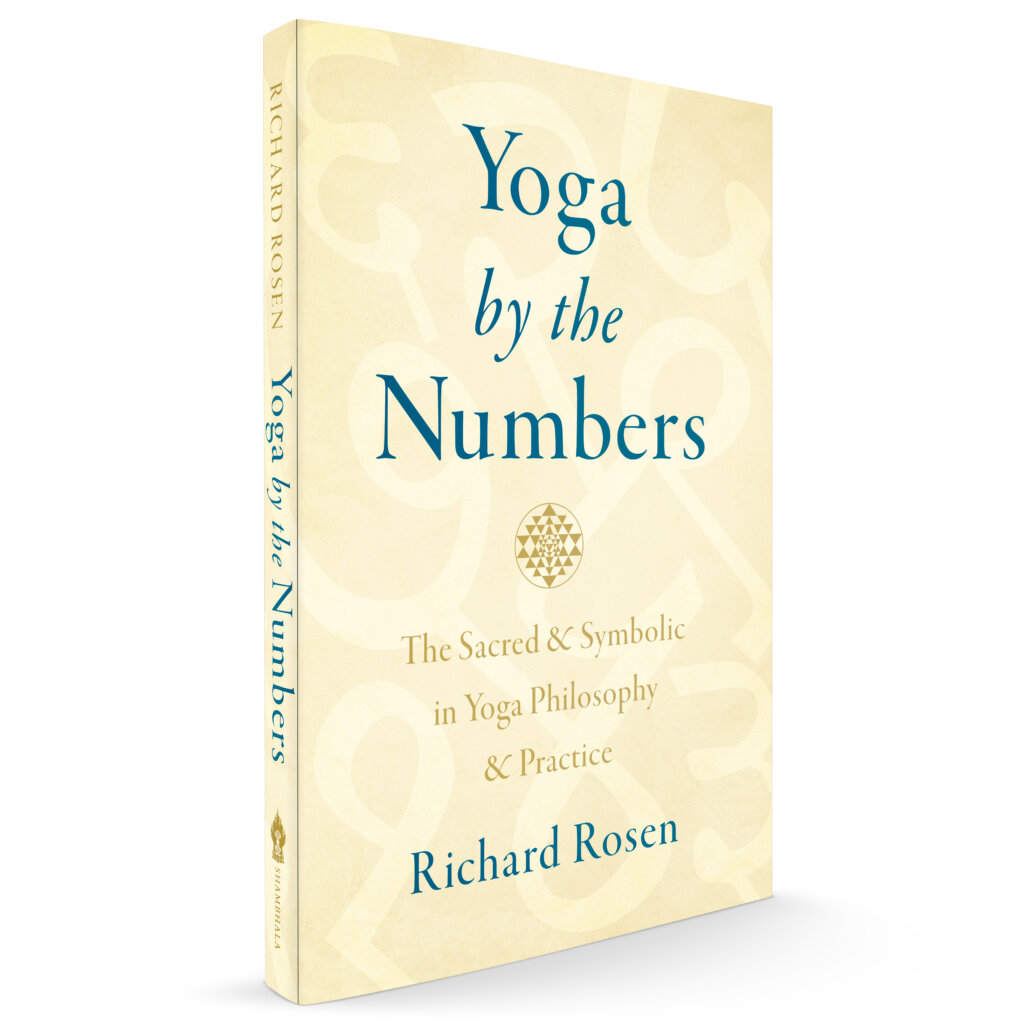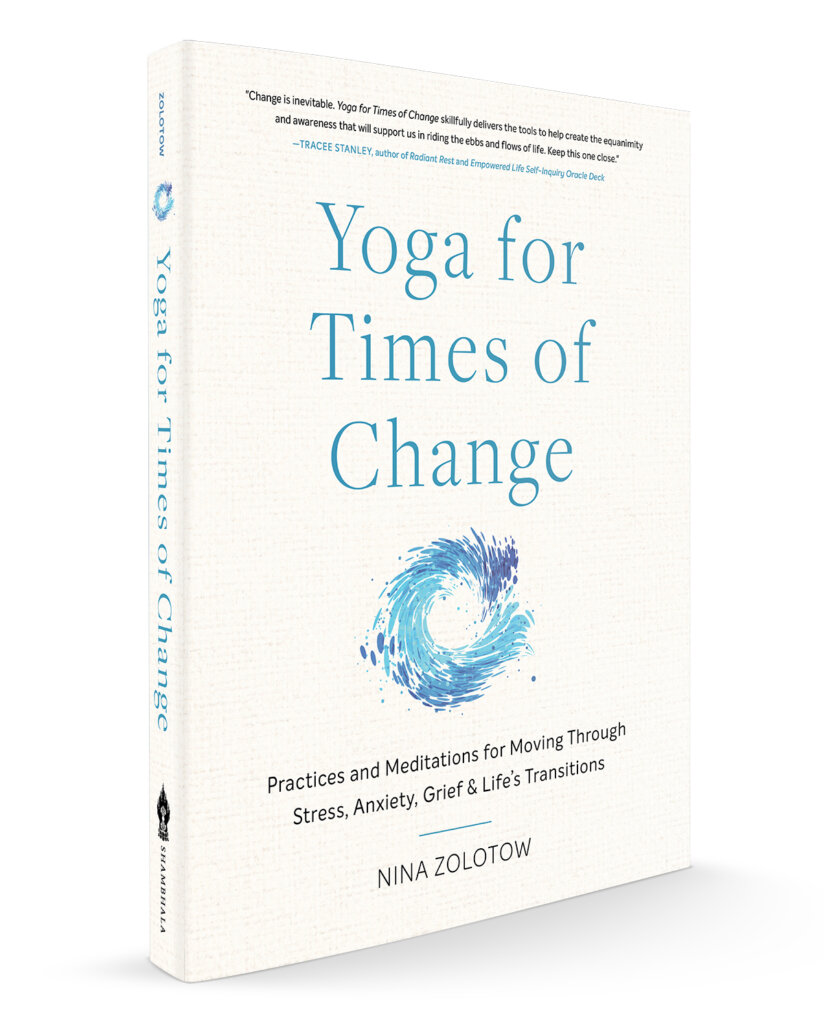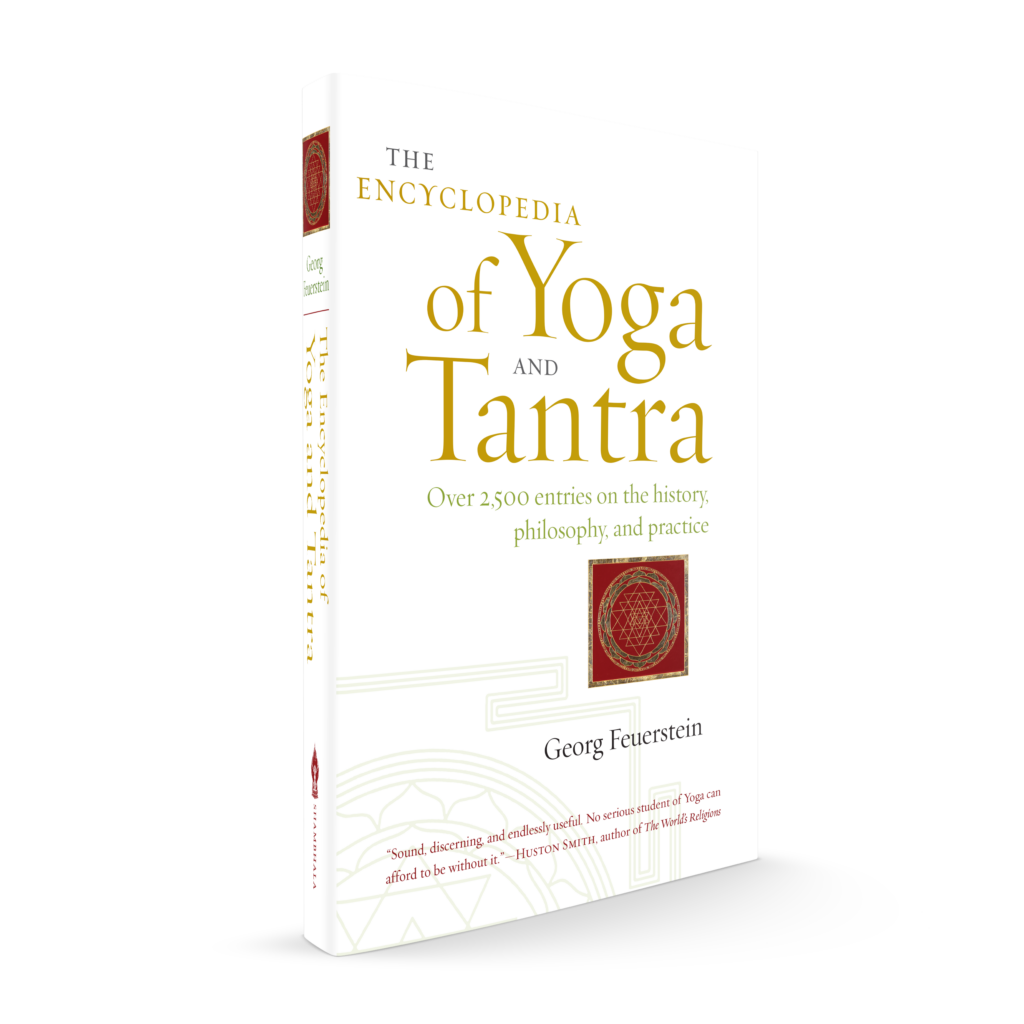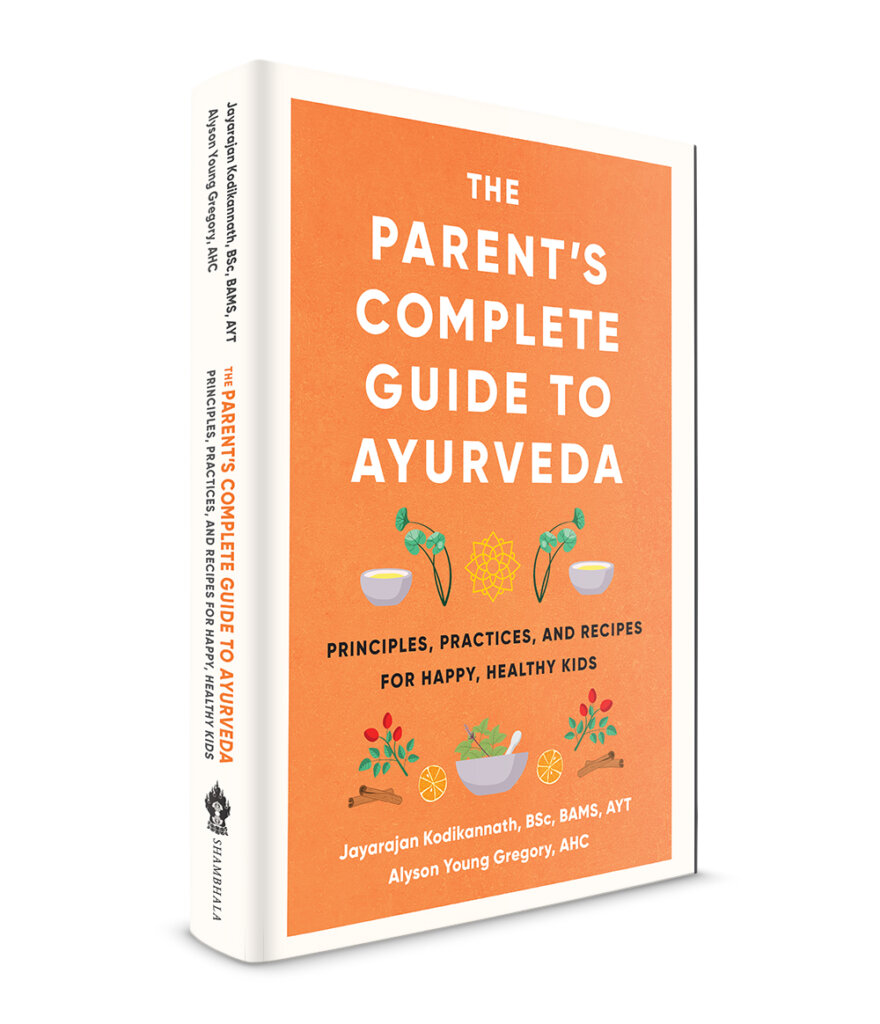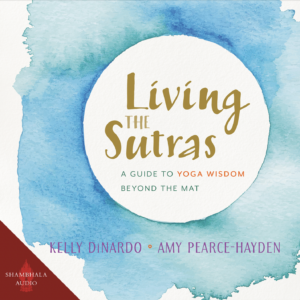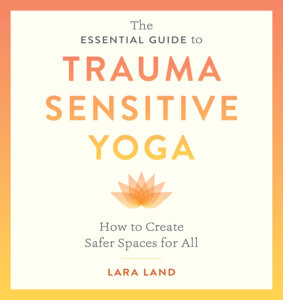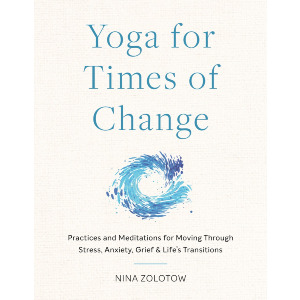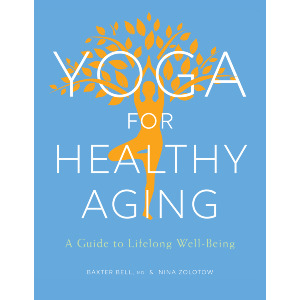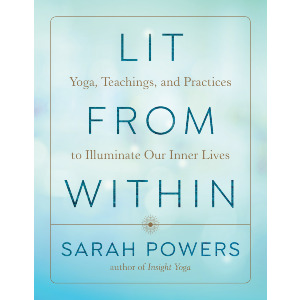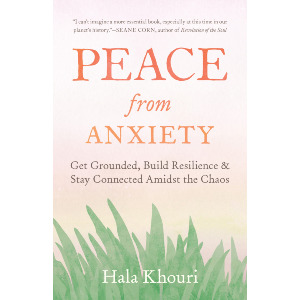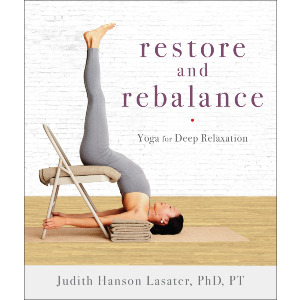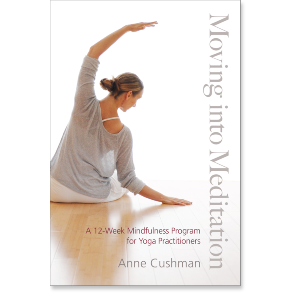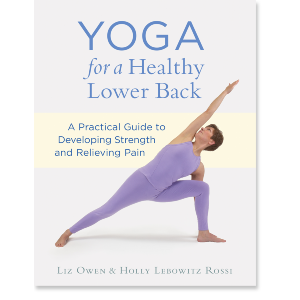See our other Year in Review Guides: Theravada/Pali/Insight | Zen and Chan | Tibetan Buddhism
Yoga | Personal Development | Kids Books
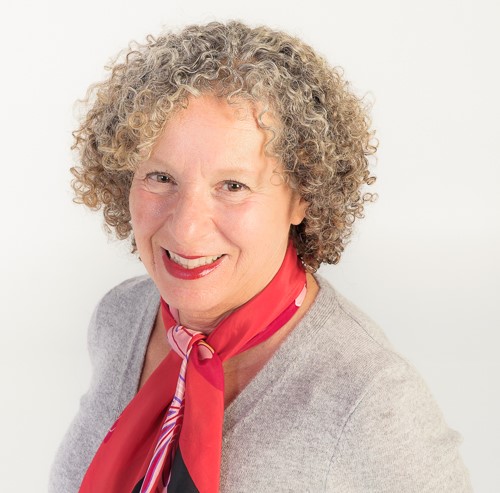

Nina Zolotow
NINA ZOLOTOW is a certified yoga teacher as well as a longtime yoga writer. She teaches workshops and series classes on yoga for emotional well-being, stress, better sleep, cultivating equanimity, and healthy aging. Zolotow is the editor-in-chief of the Yoga for Healthy Aging Blog and is the coauthor of Yoga for Healthy Aging (with Baxter Bell) and Yoga and Moving toward Balance (both with Rodney Yee).
Nina Zolotow
GUIDES
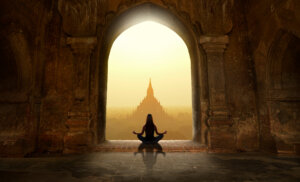

Receive a 30% discount on these titles through January 2nd using code 2022YE at checkout
We are very happy to share with you a look back at our 2022 releases in yoga including asanas, philosophy, history, and more.
Jump to: Books | Audiobooks | Forthcoming Books
Moon Path Yoga: Kundalini Practices and Rituals for Women to Align with the Lunar Cycles
By Sierra Hollister
Experience the powerful, revitalizing, feminine “lunar” energy at the heart of Kundalini yoga practice, through this beautifully-illustrated guide with over 170 asana, pranayama, mantra, and meditations for practitioners of all levels.
One of the oldest forms of yoga, Kundalini Yoga is a timeless tradition that includes powerful, specific teachings for anyone identifying as female. These “lunar” practices not only support well-being, health, and vitality through every stage of life, but also awaken and enhance Shakti—the divine feminine, creative life force.
Sierra Hollister helps women discover their unique moon cycle and offers specific sequences (kriya) for daily life, for mothering, for sexuality and relationships—as well as practices, breathing exercises, mudra, mantra, and recipes to provide support and balance.
Moon Path Yoga offers a comprehensive lunar rhythm practice that allows women of any age to awaken their innate divine feminine energy.
llustrated with over 125 color photos, this guide includes:
- Practice for Radiance, Vitality, and Grace
- Gestating: A Prenatal Sequence
- Meditation for a Calm Heart
- Meditation for Couples
- Sequence to Relieve PMS—or to Slow Down and Experience Gratitude
Yoga by the Numbers: The Sacred and Symbolic in Yoga Philosophy and Practice
By Richard Rosen
Numbers play a meaningful role in the philosophy of many spiritual traditions—and yoga is no exception. For example, the number one is the quintessential yoga number, representing unity and wholeness; number two sometimes stands for cooperative effort and other times for conflict; and there are twelve different names for the mantra OM, each one revealing a different aspect of this root sound.
With his distinctive blend of knowledge and humor, Richard Rosen unpacks the fascinating significance that numbers hold in the philosophy of yoga. He weaves stories and practices throughout, offering readers a hands-on way to explore the importance of numbers in their own practice.
He covers the numerical aspects of Indian philosophy, the subtle body, Shiva and Shakti, hatha yoga, preliminary and main practices, mantra, a lots more.
Yoga for Times of Change: Practices and Meditations for Moving Through Stress, Anxiety, Grief, and Life’s Transitions
By Nina Zolotow
Stay calm, steady, and composed through the ups and downs of life with yoga poses, relaxation techniques, meditations, and lessons on how to manage stress, grief, anxiety, and life’s transitions.
Yoga was originally designed to make you calmer, steadier, and more content, not just stronger and healthier. This guide offers many ways you can use yoga as a healthy coping mechanism when you’re confronted with the physical, emotional, and mental changes that life brings us. It includes both ancient and modern techniques, including yoga poses, breathing practices, relaxation, mantras, and meditation, that allow you to return yourself to balance when you’re experiencing challenges, and to fortify yourself for the future.
Nina Zolotow covers myriad topics related to change, including stress, anxiety, depression, anger, grief, being present, making peace with change, how to practice yoga when you’re experiencing physical changes, and how to practice meditation, breath practices, and yoga on your own, among others. Become more comfortable with life’s ups and downs by learning to live your everyday life the yogic way.
The Encyclopedia of Yoga and Tantra: Over 2500 Entries on the History, Philosophy, and Practice
By Georg Feuerstein
The ever-increasing popularity of Yoga and related practices makes a desktop reference like this indispensible. With over twenty-five hundred entries and extensive illustrations, this encyclopedia of key terms from the Yoga and Tantra traditions combines comprehensiveness with accessibility. Acclaimed Yoga scholar Georg Feuerstein has arranged and written entries in a manner that will inform rather than overwhelm the everyday reader, while at the same time it offers valuable references for professional researchers and historians of religion. This new edition includes information about contemporary Yoga teachers and also provides fuller descriptions and illustrations of Yoga poses and additional cross references.
Entries include:
- Descriptions of the many yogic āsanas
- The major and minor texts and scriptures
- Detailed discussions of the different forms of Yoga, including Bhakti, Hatha, and Jnāna
- The numerous gods and goddesses of Tantric tradition
- All the most essential names in Yoga and Tantra, from ancient adepts such as Patanjali and Shankara to modern masters like B.K.S. Iyengar and Krishnamacharya
- And much more . . .
The Parent’s Complete Guide to Ayurveda: Principles, Practices, and Recipes for Happy, Healthy Kids
By Jayarajan Kodikannath andAlyson Young Gregory
The traditional holistic health system of Ayurveda offers a wealth of effective lifestyle advice and remedies for the whole family. The Parent’s Complete Guide to Ayurveda is an accessible primer to pediatric Ayurveda, with simple, commonsense dietary, herbal, and self-care practices to both address various ailments and promote vibrant health and well-being in children ages 3–16.
Dr. Jayarajan Kodikannath, an Ayurvedic specialist, and Alyson Young Gregory, an Ayurvedic health counselor and educator, provide a wellness roadmap that parents can tailor to their children’s individual mind-body type, known as prakriti. This book first gives parents the tools to determine their child’s prakriti and then offers customized everyday diet and lifestyle guidelines based on traditional Ayurvedic principles for a healthy body and mind, including yoga, meditation, breathing practices, and daily wellness routines.
The advice offered in this book includes:
- How to prevent and manage common ailments and disorders with diet and home remedies
- How to encourage healthy habits around sleep, diet, exercise, and screen time
- Easy-to-make tonics, teas, and soaks to alleviate a number of conditions, including tummy aches, stress, colds, insomnia, sluggishness, and dehydration
- Ayurvedic perspectives on digestive, metabolic, respiratory, and emotional disorders prevalent in children today
Living the Sutras: A Guide to Yoga Wisdom beyond the Mat
By Kelly DiNardo and Amy Pearce-Hayden
In its highest form, yoga is a practice for your body and your mind. Living the Sutras brings the wisdom of classical yoga philosophy into your life in an accessible and relevant way. The Yoga Sutras, a foundational text of yoga philosophy and practice, written by the guru Patanjali over two thousand years ago, are made up of 196 aphorisms that offer potent teachings on how to deal with loss and pain, and guidance on how to lead a healthy and fulfilling life. Kelly DiNardo and Amy Pearce-Hayden offer an entrée to this yoga training for the mind and spirit by introducing a sutra or group of sutras on a related theme, providing a brief commentary, and writing prompts to allow you to reflect on and apply the meaning of the sutras to your life. The book is at once an introduction to the classical philosophy, a quick guide for students and teachers, and an active self-study that helps you to engage with yoga wisdom in a deeply personal way.
Forthcoming in 2023
And we have even more works on yoga coming out in 2023. So make sure you sign up for our emails so you do not miss them! Here is a sneak peek at our first 2023 release which you can pre-order now and take advantage of the discount.
An essential manual for yoga teachers and students to create a trauma-sensitive practice that benefits and supports all—and alienates no one.
People are turning to yoga for its stress-reducing practice and transformative philosophy. But for those who have a trauma history, the practice can be triggering. The Essential Guide to Trauma Sensitive Yoga offers an inclusive approach to yoga for teachers and students of all ages and abilities, especially those who have experienced trauma. Some of the themes covered include:
- How do the impacts of trauma show up in yoga spaces
- Suggested language for shifting power to the practitioner
- How to create an environment conducive to healing
- How to practice or teach poses in a way that includes all
- And much more
This book is beautifully illustrated with 260 photos of poses and sequences, modeled by trauma survivors who share stories of how yoga helps them heal. Land works with people of all ages, from young children to seniors, who are coping with a range of traumas including physical, emotional and sexual abuse, homelessness, genocide, and incarceration. She is a passionate advocate for making the benefits of yoga and mindfulness available to all.
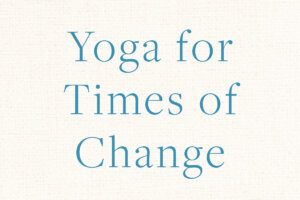
Positive Interventions Through Yoga Practices
Positive Interventions Through Yoga Practices

An excerpt from Yoga for Times of Change by Nina Zolotow.
POSITIVE INTERVENTIONS FOR PAINFUL EMOTIONS
In positive psychology, taking steps to regulate your emotions and increase your own well-being is called making “positive interventions.” Sandy Blaine, a positive psychology expert as well as a longtime yoga teacher, says that positive interventions offer us some control over our own emotional states and may help us “ride emotional waves” more skillfully rather than simply reacting. And she says that yoga offers many different options for making positive interventions.
Yoga poses in particular can have a strong effect on your moods and emotions. I myself have been using my asana practice to regulate my emotions for around twenty years now, finding supported inverted poses very helpful for anxiety and backbends very helpful for mild depression. Although there are some general principles regarding the way that specific categories of poses will affect you—for example, that standing poses and backbends are generally stimulating and that inverted poses and forward bends are generally calming—the way a given pose will affect you as an individual may differ from the way it affects someone else. So in this chapter I’ll provide a variety of suggestions for types of poses that could be helpful for anger, anxiety, and depression, and you can experiment to find out what works for you.
Yoga breath practices can also have strong effects on your moods and emotions. Calming breath practices can quiet your mind, slowing down the racing thoughts you can experience due to anger, fear, and anxiety. Balancing practices can be mildly calming or mildly stimulating, bringing you a feeling of stability. Stimulating practices may help energize you physically when you’re feeling lethargic. See chapter 7 for complete information on how these practices work and when to choose which one.
Because we’re all different, however, what works for one person may not work for another. So even though I have some specific suggestions below for the three different basic emotions, finding the best positive interventions for you will always be a matter of experimenting and observing.
Supported poses where you are facing the floor, such as Supported Child’s pose and Prone Savasana, can make you feel safe and comforted. And if anxiety is making you feel fatigued, these and other restorative poses can provide deep rest.
HOW TO PRACTICE FOR EMOTIONAL WELL-BEING
During a period when you’re experiencing anger, anxiety, or depression, it can be especially helpful to regularly practice yoga that specifically addresses what you’re going through. This usually means practicing yoga at home instead of, or in addition to, attending a class or practicing with a video. So if you don’t yet regularly practice yoga at home, consider starting, even if for only very short sessions of fifteen to twenty minutes, perhaps three days a week. And if you do practice at home already, consider practicing six days a week, even if only for very short sessions, during particularly difficult times. It may be challenging to begin a home practice when you’re not already in the habit or to start practicing more often, but taking this important step to help yourself can be very empowering! You’ll soon discover that there are healthy and safe things you can do to move yourself back toward emotional balance whenever you need to.
POSITIVE INTERVENTIONS FOR ANGER AND RESENTMENT
Dr. Lynn Somerstein told me that one winter day when she was walking down the street with her husband, her husband slipped and landed on top of her, breaking her ankle so badly that her foot was dislocated. He was unharmed. On her way to the hospital, she lay on the stretcher feeling like “the lowliest squashed worm.” Later she realized that beneath her depression was strong anger at her husband. She said, “I was enraged and thought I might stay that way, but I didn’t want to lose the relationship. I knew I had to forgive him.” She said what helped her was “Pausing, feeling, accepting. Meditating. Chair yoga at first, then simple yoga on the mat.”
The best positive interventions for anger will vary from person to person, depending on your particular situation, yoga experience, and personal preferences. Charissa Loftis says that she learned to use gentle yoga to “dissipate” the uncomfortable physical sensations her anger caused—the “hot boil” in her torso and face. Making herself more physically comfortable allowed her to feel the anger fully and to then let go of it more quickly than she had in the past. On the other hand, Iyengar Yoga teacher Jarvis Chen says that for some people active, full-body poses that engage all the large muscles of the body “can help the body to meet the energy of the mind and process the excess energy of anger.”
So you’ll need to personalize your own approach by trying different strategies to see which work best for you. But in general, the poses and practices that people who have ongoing anger may find helpful include:
- Standing poses. These poses can be grounding and help you burn off some of the excess energy that anger can cause.
- Inverted poses. These are good for lowering your stress levels, which can tamp down the fight-flight-or-freeze response when you’re too worked up for quieter practices. Inverted poses with head support, such as Supported Standing Forward Bend, Supported Wide-Legged Standing Forward Bend—and even Headstand (Sir-sasana) and Shoulderstand (Salamba Sarvangasana) if you practice them—may be especially cooling for anger.
- Demanding poses. Poses that fully engage your body, such as Downward-Facing Dog pose, Standing Forward Bend, and even Handstand (Adho Mukha Vrksasana) take you into the present moment and can interrupt the cycle of angry thoughts you are caught up in.
- Gentle mini vinyasas. Moving in and out of gentle poses with your breath, as you do in Cat-Cow pose and a Bridge pose vinyasa, engages your mind and body while avoiding the stimulation some more vigorous practices can cause. Charissa told me that for her, moving with her breath was a “nice way to pull my thoughts out of ‘the story’ associated with the anger.”
- Calming breath practices. If and when you’re able to sit still, calming breath practices can reduce your stress levels and quiet your mind. See Breath Practices for Self-Regulation on page 191 for more information.
There are also some poses and practices to consider avoiding when you’re feeling angry. To start, Dr. Somerstein recommends that if you find a particular style of yoga stokes your anger, you should stay away from it. Other practices and poses you might want to avoid include:
- Stimulating breath practices. Some yogic breath practices actually stimulate your nervous system rather than calming you, and these stimulating practices could increase your anger. See chapter 7 for more on these practices.
- Frustrating poses. Poses that cause a lot of frustration or that you just dislike for whatever reason could increase your anger.
- Poses that cause brooding. Poses where you turn inward, such as forward bends, or restorative poses where you feel like you are being left alone with your thoughts can cause some people to ruminate. If you have that experience and the pose increases your anger rather than reducing it, skip it for now.
Not all yogic breath practices are calming, and some forms actually stimulate your nervous system, which could increase your anxiety.
POSITIVE INTERVENTIONS FOR FEAR AND ANXIETY
By chance I had two private students at the same time who were experiencing anxiety and panic attacks. Their life circumstances were very different as were their symptoms, so the programs I designed for them ended up being very different as well.
The first student’s mother had recently died, after she had been at her mother’s bedside in the hospital for weeks, and her panic attacks came when she was in bed in the middle of the night. After experimenting, we decided that the best technique for heading off a full-blown panic attack would be a breath practice where she consciously extended her exhalation. Although even just breath awareness can help with a panic attack or anxiety, having a specific exercise to do helped her focus more on her breath instead of just “watching” it. She later reported back to me, “The breathing has totally helped me, and it even helped me during the day when I was starting to freak out at a restaurant!”
For long-term relaxation, Legs Up the Wall pose was the supported inverted pose that suited her best. Since she was very active already with ballet lessons and wasn’t a regular yoga practitioner, we decided that a mini practice of this one pose for ten to twenty minutes a day would be the best approach for her.
The second student had recently moved away from family and friends to go to graduate school. Her panic attacks came in the daytime, when she was fully awake and getting ready to face her day. She didn’t want to try breath work because the thought of staying still to practice it made her feel even more anxious! Because she was hyper and restless, we decided she should try an active asana practice in the morning to head off the anxiety, followed by a short session of stress management with Supported Bridge pose, her supported inverted pose of choice, to reduce overall stress levels.
Because the best positive interventions for fear and anxiety will vary from person to person, you’ll need to personalize your own approach by trying different strategies to see which works best for you. But in general, the poses and practices that people with anxiety and fear may find helpful include:
- Supported Prone poses. Supported poses where you are facing the floor, such as Supported Child’s pose and Prone Savasana, can make you feel safe and comforted. And if anxiety is making you feel fatigued, these and other restorative poses can provide deep rest.
- Forward bends. Standing and/or seated forward bends can feel safe and quieting when you’re anxious. There are some who find the classic versions of these poses challenging or unpleasant, but there are many ways to make forward bends accessible and even comfortable for most people, some of which are included in Calming Practice for Fear or Anxiety on page 113. So give these variations a try.
- Supported inverted poses. These poses are particularly beneficial for anxiety because the physical orientation of the poses triggers the relaxation response, and concentration isn’t as essential. They may also feel easier for you to practice than quieter forms of relaxation.
- Calming breath practices. If and when you’re able to sit still, calming breath practices can reduce your stress levels and quiet your mind. They may also be useful for heading off a spike in anxiety if you feel an attack coming on because they bring you into the present moment while also quieting your nervous system. See Breath Practices for Self-Regulationon page 191.
- Standing poses. These poses can be grounding and help you burn off some of the excess energy that anxiety can cause.
- Moving with your breath. Practicing gentle vinyasas, where you slowly move in and out of poses with your breath, can take you out of your anxiety and into the present moment and can uplift you emotionally when you’re feeling overwhelmed.
- Stretching your hip joints. In general, releasing physical tension as described under Coping Skill 6: Releasing Physical Tension by Stretching on page 48 can make you feel calmer as well as physically comfortable. Dr. Somerstein says that for anxiety and fear, stretching your hip joints in particular releases “stored bound energy,” which might provide some relief. Hip openers include any standing poses or seated and reclined stretches where you take one leg out to the side, behind you, in front of you, or across the midline of your body.
There are some poses and practices you should consider avoiding when you’re feeling anxious. In general, Dr. Somerstein recommends avoiding power or flow yoga when you’re anxious because, she says, you can get swept up in a fast, difficult routine that might wind you up instead of down, and you might even get hurt. Other suggestions include:
- Stimulating breath practices. Not all yogic breath practices are calming, and some forms actually stimulate your nervous system, which could increase your anxiety. See Breath Practices for Self-Regulation on page 191 for more information.
- Stimulating poses and practices. Some challenging poses, deep backbends, and vinyasas that include jumping or moving quickly between poses can also raise stress levels and increase anxiety.
- Poses that feel unsafe. Poses where you are supine (lying on your back), are tied up with a yoga strap, or have your eyes closed can make you feel vulnerable and increase anxiety. The same is true for poses that scare you, such as full inversions or deep backbends. So, as you practice any of the sequences in this book or any other sequences, whether in a class or on your own, be aware of how poses and practices affect you. If they’re not working for you at this time, find an alternative.
- Meditation. Although meditation is considered to be “calming,” if you’re feeling anxious, sitting alone with your thoughts could cause a downward spiral and make you feel worse. And Dr. Somerstein says that starting a practice on your own, especially when you’re feeling anxious, is actually a bad idea. But if you already have a regular meditation practice and feel that the practice is helpful for your anxiety, then, of course, it’s safe for you to continue practicing.
Share
Related Books
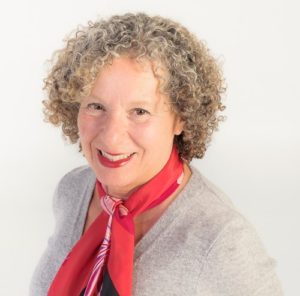
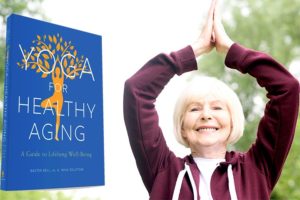
Free Download | Yoga for Brain + Nervous System Health
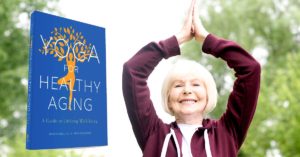
Would you like to keep your brain and nervous system happy as you age?
These 20 pages provide must-have information about how aging affects your brain, central nervous system, peripheral nervous system, digestive system, circulatory system, and more. There are many easy things you can do to keep these systems healthy—learn how yoga can help!
This guide ends with a 50-minute yoga practice specifically for your brain and nervous system—enjoy!
Enter your email to download.
*You are agreeing to receive promotional messages from Shambhala Publications. You may unsubscribe at any time.
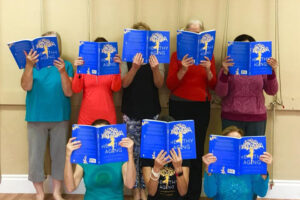
The Most Popular Posts from the Yoga for Healthy Aging Blog
by Nina Zolotow, author of Yoga for Healthy Aging
Because the sixth anniversary of the Yoga for Healthy Aging blog is coming up next week, I thought I’d check to see what our nine most popular—or at least most viewed—posts were over all time. (Nine seems like a random number but for some reason that’s the number the Blogger uses.) Here are the results!
I don’t know about you but I’m always surprised when I look at this list. Some of it surely has to do with how people search for “yoga and xxxx” when they are surfing the web, but I think it also has to do with shares on Facebook.
In case you’re interested in checking any of these posts out (some are quite old and you may have missed some), I'll tell you a bit about each one and provide a link to the post.
- In New Tricks for Old Dogs: Working with Bunions, Baxter shared both Donald Moyer’s and JJ Gormley’s techniques for working with bunions as well as giving some own advice. Fun photos taken by Nina include one of Baxter's feet with a can of beans and a rubber band.
- In How Yoga Helps with Pain, I provided an overview of the three different ways you can use yoga to help reduce pain and/or eliminate it entirely: asanas, breath work, and relaxation. If this is a topic that interests you, I also wrote Yoga for Pain Management: The Big Picture, which provides an overview of all the posts we have on pain on the blog.
- In Yoga for Multiple Sclerosis: Proof of the Benefits!, Ram provided background information about MS and then discussed several research studies that "discuss the benefits and potential role of yoga as an alternative treatment of symptom management for individuals with MS and describe how yoga can improve the patients’ quality of life."
- In Plank Pose vs. Sit-Ups for Core Strength, I wrote about how the US military are replacing sit-ups with Plank pose (the forearm version), even going so far as to say that sit-ups are “an antiquity of exercise best left in the dustbin of fitness history.”
- In Featured Pose: Legs Up the Wall Pose, Baxter provided detailed instructions for practicing four different versions of Legs Up the Wall pose (Viparita Karani). I'm pleased this is our most popular pose description because it’s absolutely invaluable for stress management as well as for improving your circulation.
- In Yoga Helps Both Rheumatoid Arthritis and Osteoarthritis, I reported on a study that showed that eight weeks of yoga classes and home practice was associated with “clinically significant improvements in physical and mental health, fitness, psychological function, and HRQOL, with no adverse outcomes.” Although the study is not available to the public, I was able to get my hands on it, providing information about the type of yoga used for the study.
- In Two New Studies on Yoga and Parkinson’s Disease, I reported on two studies that concluded that yoga provided “an alternative method” both for treating reversible symptoms that affect physical functioning and for improving psychological well-being in people with PD.
- In Practice As Many As You Can: T. Krishnamacharya’s Yoga, I discussed the history of modern yoga and how in the 20th century T. Krishnamacharya developed many of the yoga poses we practice today. I wrote this in the hopes of encouraging people to practice at home without worrying too much about doing it “right” and recommended getting started by following Krishnamacharya’s advice to “Practice as many as you can.”
- In Arthritis of the Hip Joint, Baxter and I described in detail exactly what arthritis of the hip joint is and provided recommendations for how to get started adding yoga to your healing regimen.
Related Books


